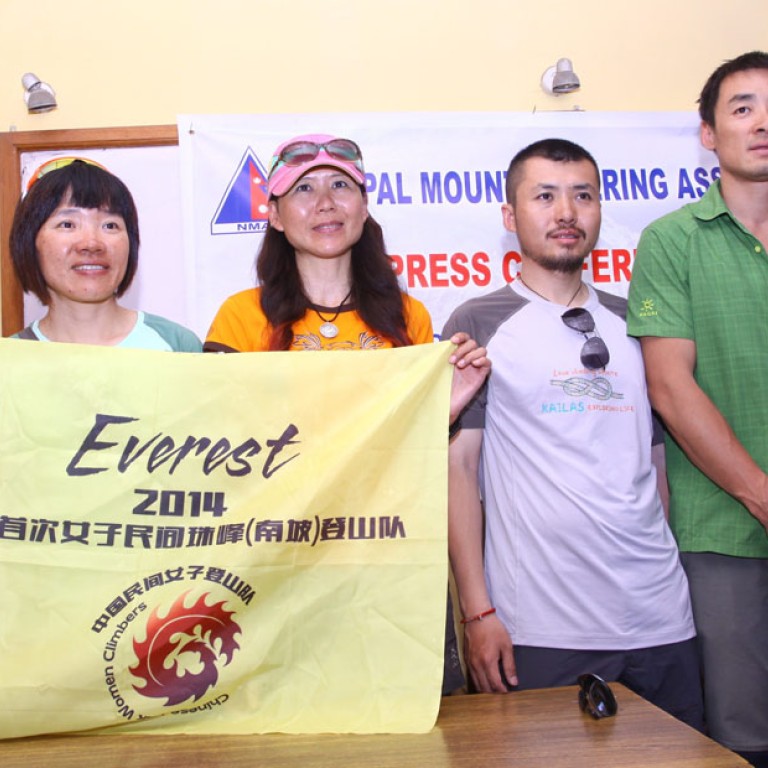
Chinese woman first to summit of Everest after fatal avalanche
Forty-year-old took helicopter to dodge site of deadly avalanche that led to sherpa row
A Chinese woman became the first person to reach the summit of Mount Everest from the Nepali side since an avalanche last month killed 16 guides and forced hundreds of foreigners to abandon attempts on the world's highest mountain.

The accident, the deadliest in the history of the peak, triggered a dispute between sherpa guides, who wanted a climbing ban in honour of their colleagues, and the government, which refused to close the mountain.
Tourism Ministry official Dipendra Poudel said 40-year-old Wang reached the 8,850- metre summit on Friday afternoon in good weather.
She climbed with five Sherpa guides along the Southeast Ridge route pioneered by Sir Edmund Hillary and Sherpa Tenzing Norgay in 1953.
"Wang is the first climber to top Mount Everest this season. This is a historic ascent and a positive thing for Nepal's mountain tourism," Poudel said.
"This is the proof that Mount Everest was not closed after the avalanche and it will never be closed," he said.
Tourism, including mountain climbing, contributes four percent to Nepal's GDP.
More than 4,000 people have climbed Mount Everest, while more than 250 have died on the slopes of the mountain which can also be climbed from China.
The Nepali guides were ferrying supplies for foreign climbers when the avalanche struck on April 18 in Khumbu Icefall on a treacherous stretch of a planned route.
The disaster highlighted the tremendous risks sherpas take to guide their foreign clients to the summit.
The authorities were accused of doing little for the sherpas while collecting considerable sums from foreign climbers.
Sherpas were unhappy with the government that paid only US$400 to the families to meet funeral costs.
The row forced 334 foreign climbers to call off attempts on the summit and the government agreed to allow them to climb on the same permit if they returned within five years.
Each climber pays US$10,000 for the permit, which is a key source of revenue for the cash- strapped government.

